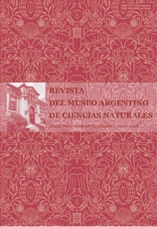Efectos de la herbivoría de la lapa Siphonaria lessoni Blainville, 1824 (Gastropoda) sobre la comunidad asociada a Brachidontes rodriguezii (dOrbigny, 1846) (Bivalvia)
Resumen
The effects of grazing activity by the limpet Siphonaria lessoni Blainville, 1824
(Gastropoda) on the Brachidontes rodriguezii (dOrbigny, 1846) (Bivalvia) community. Understanding
how biodiversity influences and modifies ecosystem processes depends on our knowledge of the roles of the
individual species. In the intertidal rocky shore communities, the molluscs are the main grazers and among
them are found the pulmonate limpet Siphonaria lessoni. Here it was used a manipulative field experiment to
test community responses to the deletion of the grazing from the mid-intertidal zone on warm-temperate rocky
shores of Buenos Aires Provinces (Southwestern Atlantic). S. lessoni was removed from four plots (20 x 20 cm)
by a five months period (summer-autumn), in order to analyze the grazing effect on the intertidal assemblages
dominated by the mytilid Brachidontes rodriguezii. It was compared the specific richness, biomass and production
between limpet removing plots and controls plots. After the mentioned time, in the limpet removing plots
the biomass average of the algae assemblages was fifty times higher than in controls plots. Specific richness of
species assemblages of mussels did not show significant variation between treatments. Community structure
associated to B. rodriguezii did not show significant variation between treatments. In accordance with the
season of year when this experiment was performed, the results suggest that the biomass of epibenthic algae of
B. rodriguezzi community was regulated by the grazing activity of the limpet S. lessoni.
(Gastropoda) on the Brachidontes rodriguezii (dOrbigny, 1846) (Bivalvia) community. Understanding
how biodiversity influences and modifies ecosystem processes depends on our knowledge of the roles of the
individual species. In the intertidal rocky shore communities, the molluscs are the main grazers and among
them are found the pulmonate limpet Siphonaria lessoni. Here it was used a manipulative field experiment to
test community responses to the deletion of the grazing from the mid-intertidal zone on warm-temperate rocky
shores of Buenos Aires Provinces (Southwestern Atlantic). S. lessoni was removed from four plots (20 x 20 cm)
by a five months period (summer-autumn), in order to analyze the grazing effect on the intertidal assemblages
dominated by the mytilid Brachidontes rodriguezii. It was compared the specific richness, biomass and production
between limpet removing plots and controls plots. After the mentioned time, in the limpet removing plots
the biomass average of the algae assemblages was fifty times higher than in controls plots. Specific richness of
species assemblages of mussels did not show significant variation between treatments. Community structure
associated to B. rodriguezii did not show significant variation between treatments. In accordance with the
season of year when this experiment was performed, the results suggest that the biomass of epibenthic algae of
B. rodriguezzi community was regulated by the grazing activity of the limpet S. lessoni.
Texto completo:
PDFEnlaces refback
- No hay ningún enlace refback.

This work is licensed under a Creative Commons Attribution 3.0 License.

